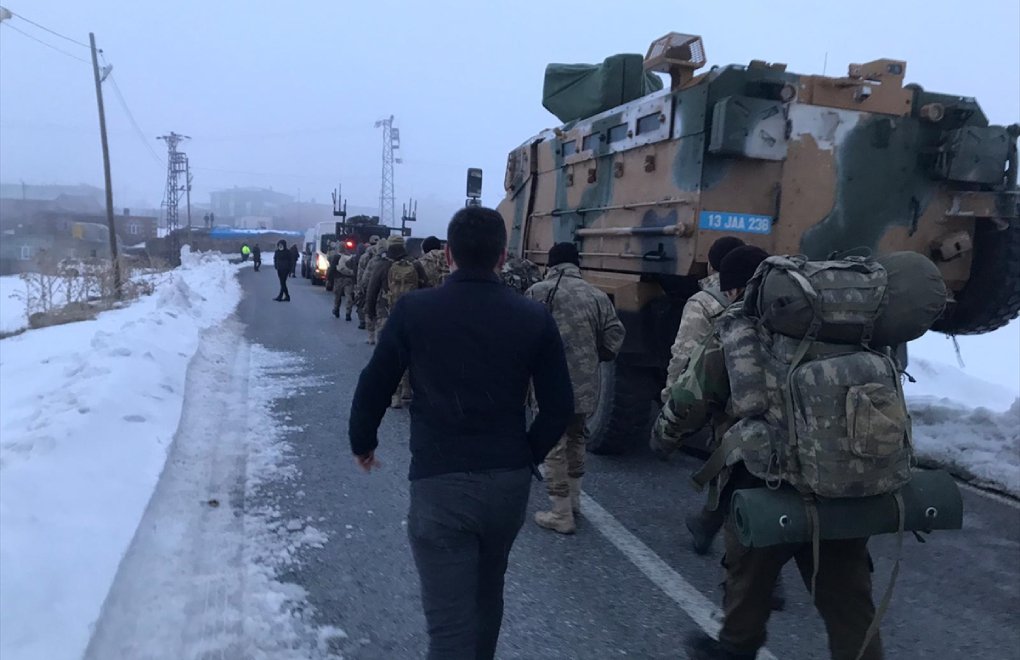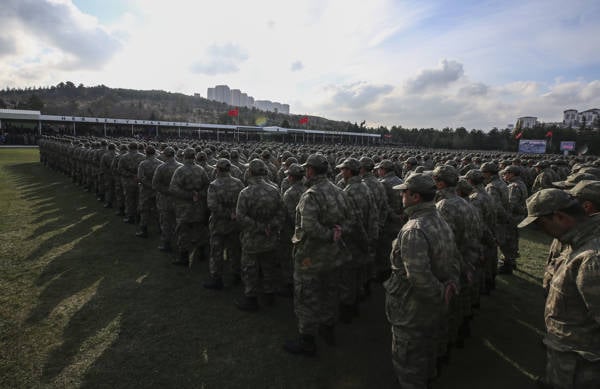* Photo: Anadolu Agency (AA)
Click to read the article in Turkish
In its second major data launch in the lead-up to the release of its flagship publication in mid-2021, the Stockholm International Peace Research Institute (SIPRI) has indicated that for the first time since 2001–2005, the volume of deliveries of major arms between countries did not increase between the periods of 2011–2015 and 2016–2020.
However, international arms transfers remain close to the highest level since the end of the cold war, according to the Institute.
Sharing data about Turkey as well, the SIPRI has found that Turkey's arms imports fell by 59 percent between 2011–15 and 2016–20.
According to the Institute, a major factor was the USA halting deliveries of F-35 combat aircraft to the country in 2019, after Turkey imported Russian air defence systems. Turkey is also increasing domestic production of major arms, to reduce its reliance on imports.
The effects of the pandemic
Commenting on the overall data, Pieter D. Wezeman, a Senior Researcher with the SIPRI Arms and Military Expenditure Programme, said:
"It is too early to say whether the period of rapid growth in arms transfers of the past two decades is over. For example, the economic impact of the Covid-19 pandemic could see some countries reassessing their arms imports in the coming years. However, at the same time, even at the height of the pandemic in 2020, several countries signed large contracts for major arms."
Situation in countries
Other highlights from the data launch are as follows:
"The USA remains the largest arms exporter, increasing its global share of arms exports from 32 to 37 percent between 2011–15 and 2016–20. The USA supplied major arms to 96 states in 2016–20, far more than any other supplier. Almost half (47 percent) of US arms transfers went to the Middle East. Saudi Arabia alone accounted for 24 percent of total US arms exports.
"The third and fourth largest exporters also experienced substantial growth between 2011–2015 and 2016–2020.
"France increased its exports of major arms by 44 percent and accounted for 8.2 percent of global arms exports in 2016–20. India, Egypt and Qatar together received 59 percent of French arms exports.
"Germany increased its exports of major arms by 21 percent between 2011–2015 and 2016–2020 and accounted for 5.5 percent of the global total. The top markets for German arms exports were South Korea, Algeria and Egypt.
"Russia and China both saw their arms exports falling. Arms exports by Russia, which accounted for 20 percent of all exports of major arms in 2016–2020, dropped by 22 percent (to roughly the same level as in 2006–10). The bulk—around 90 percent—of this decrease was attributable to a 53 percent fall in its arms exports to India.
Growing demand in the Middle East
"The biggest growth in arms imports was seen in the Middle East. Middle Eastern states imported 25 percent more major arms in 2016–20 than they did in 2011–15. This reflected regional strategic competition among several states in the Gulf region.
"Saudi Arabia—the world's largest arms importer—increased its arms imports by 61 percent and Qatar by 361 percent. Arms imports by the United Arab Emirates (UAE) fell by 37 percent, but several planned deliveries of major arms—including of 50 F-35 combat aircraft from the USA agreed in 2020—suggest that the UAE will continue to import large volumes of arms.
"Egypt's arms imports increased by 136 percent between 2011–2015 and 2016–2020. Egypt, which is involved in disputes with Turkey over hydrocarbon resources in the eastern Mediterranean, has invested heavily in its naval forces.
Arms race between Armeni̇a and Azerbaijan
"Both Armenia and Azerbaijan have been building up their military capabilities through major arms imports in recent years. In 2016–20 Russia accounted for 94 percent of Armenian arms imports while Israel accounted for 69 percent of Azerbaijan's arms imports." (HA/SD)
* Click here to read the full analysis








